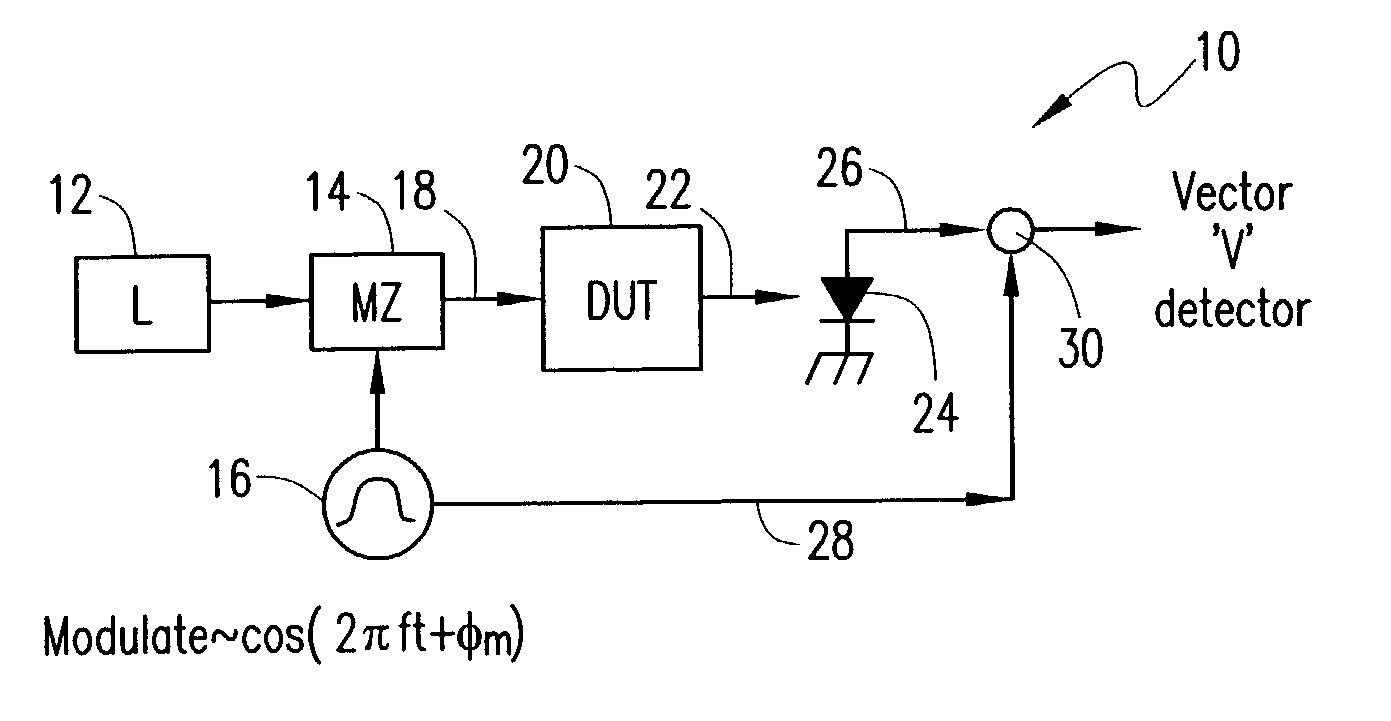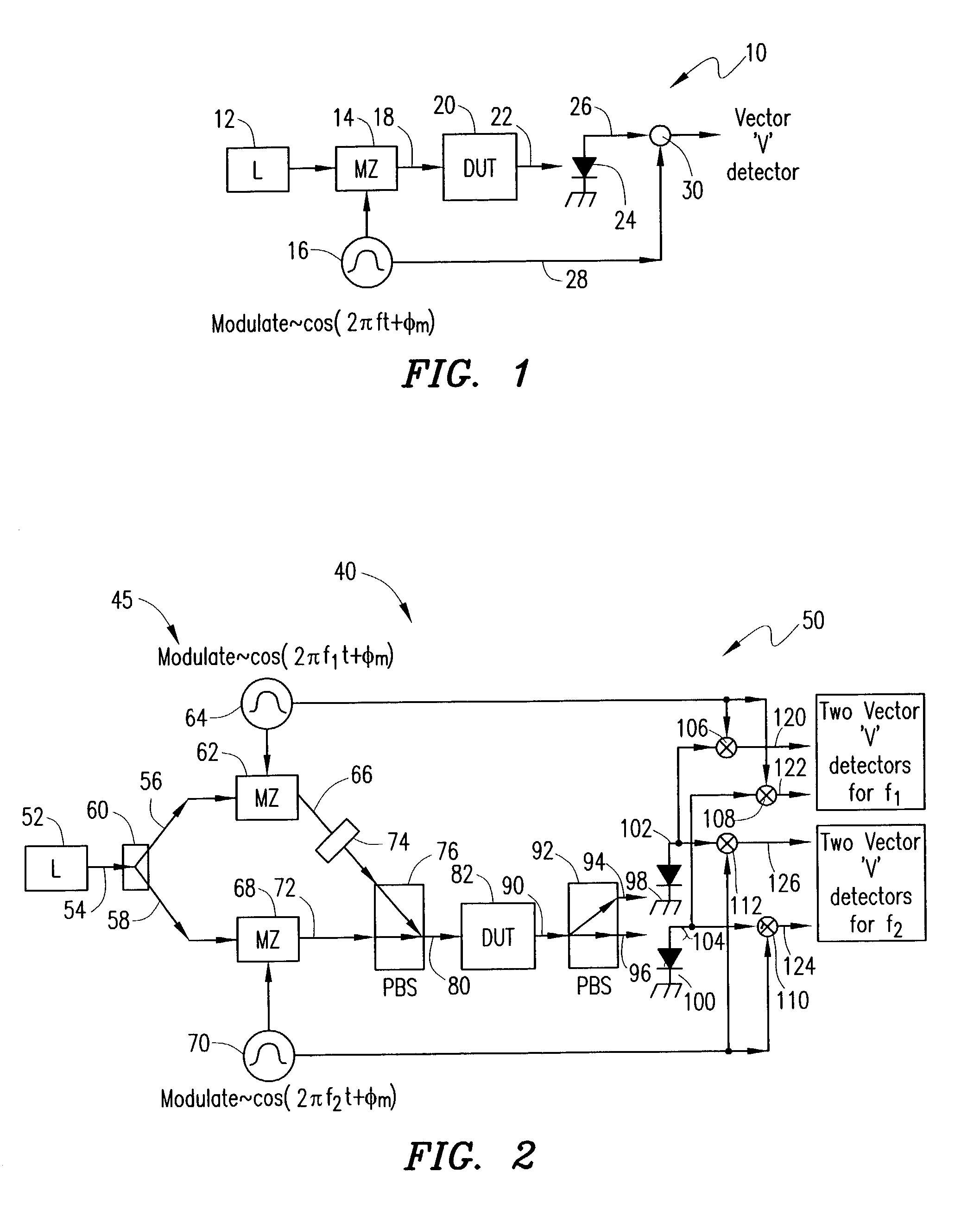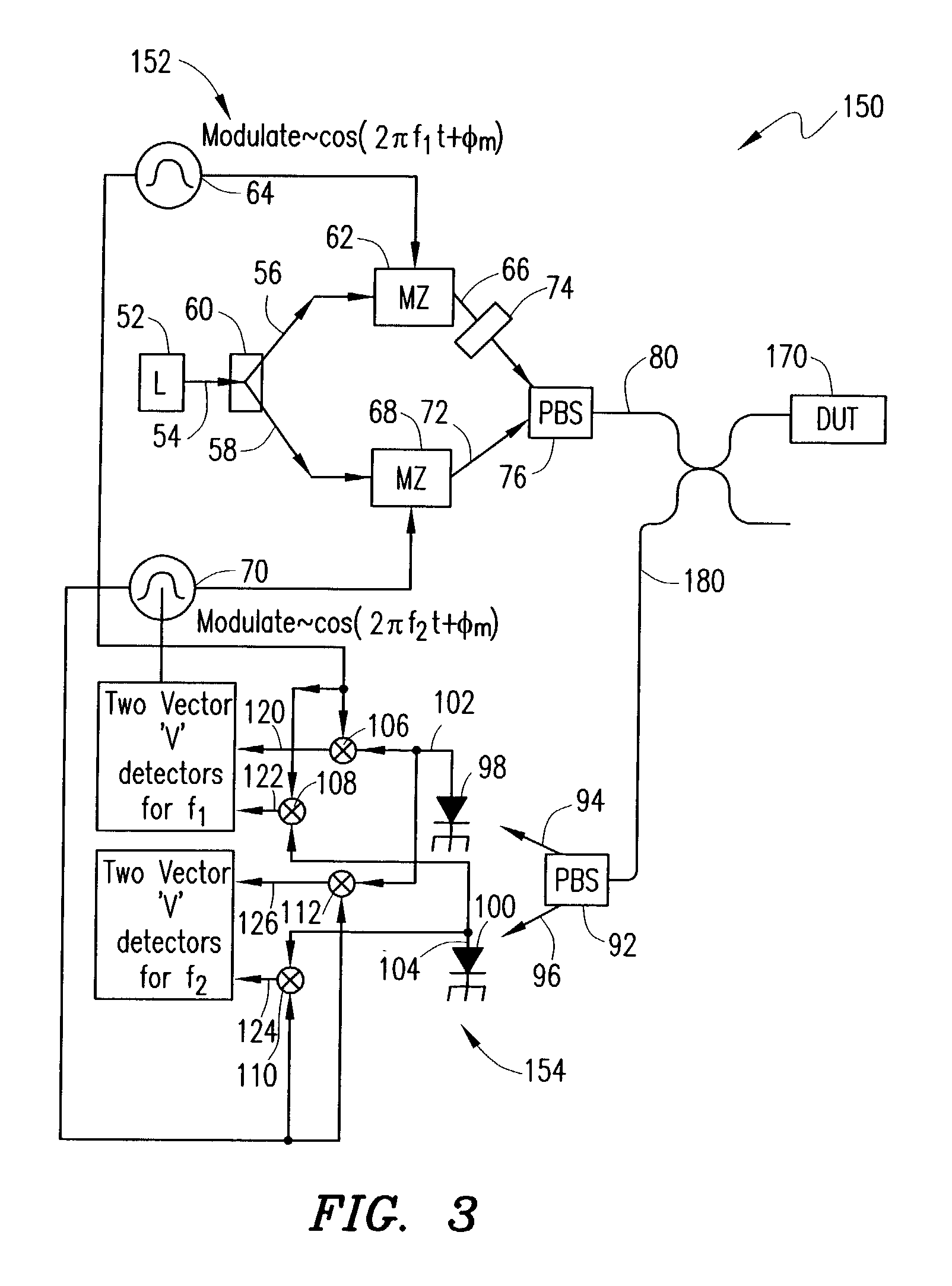Single sweep phase shift method and apparatus for measuring chromatic and polarization dependent dispersion
a phase shift and phase shift technology, applied in the field of optical measurement, can solve the problems of limiting the information carrying capacity pulse distortion, otherwise affecting the quality of an optical signal transmitted through the system,
- Summary
- Abstract
- Description
- Claims
- Application Information
AI Technical Summary
Benefits of technology
Problems solved by technology
Method used
Image
Examples
Embodiment Construction
[0013] Embodiments in accordance with the invention provide a technique for accurately determining chromatic dispersion, polarization dependent dispersion and other optical properties of an optical device. The technique permits a relaxation of wavelength repeatability requirements of an optical source used in the technique and may be completed in a reduced period of time.
[0014] Because chromatic dispersion negatively influences the quality of an optical signal carried by an optical communications system, it is important for a designer or a manufacturer of an optical communications system to precisely control the chromatic dispersion of the system. A typical optical communications system is composed of a plurality of separate optical devices, for example, a plurality of spans of optical fiber, and each device may have a different chromatic dispersion. In order to minimize the total chromatic dispersion of the system, it is necessary to compensate for the chromatic dispersion introduc...
PUM
| Property | Measurement | Unit |
|---|---|---|
| optical property | aaaaa | aaaaa |
| frequencies | aaaaa | aaaaa |
| optical input | aaaaa | aaaaa |
Abstract
Description
Claims
Application Information
 Login to View More
Login to View More - R&D
- Intellectual Property
- Life Sciences
- Materials
- Tech Scout
- Unparalleled Data Quality
- Higher Quality Content
- 60% Fewer Hallucinations
Browse by: Latest US Patents, China's latest patents, Technical Efficacy Thesaurus, Application Domain, Technology Topic, Popular Technical Reports.
© 2025 PatSnap. All rights reserved.Legal|Privacy policy|Modern Slavery Act Transparency Statement|Sitemap|About US| Contact US: help@patsnap.com



